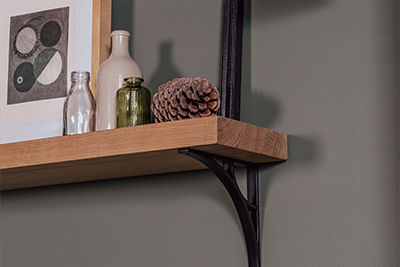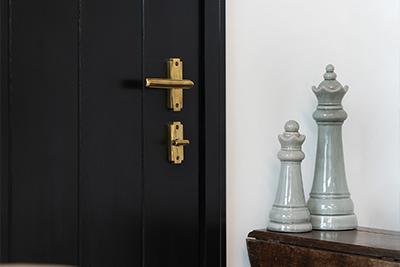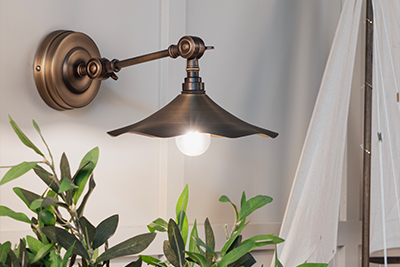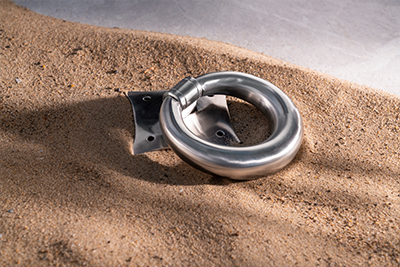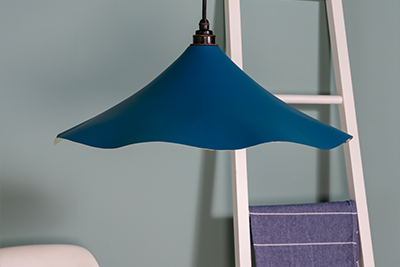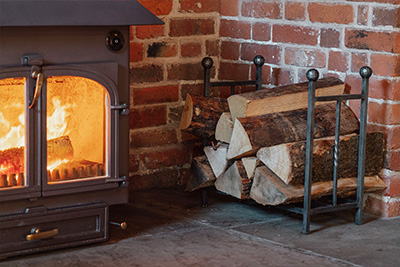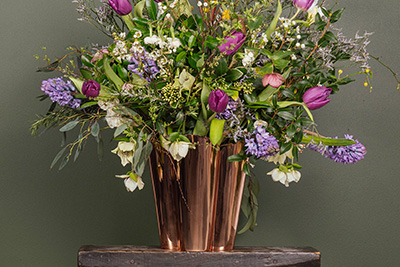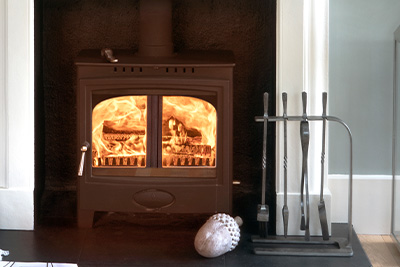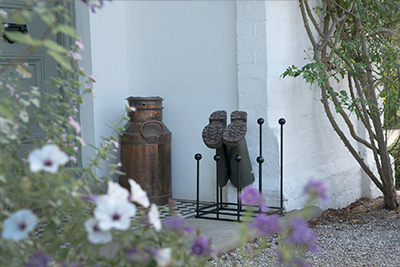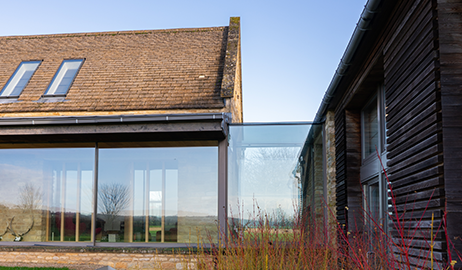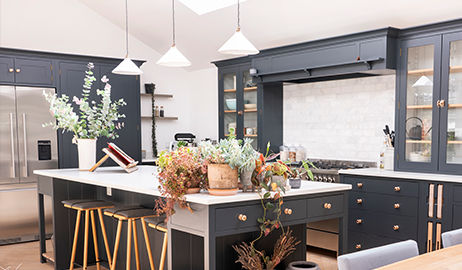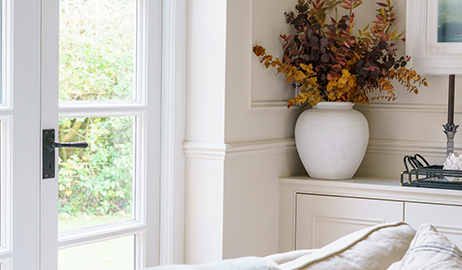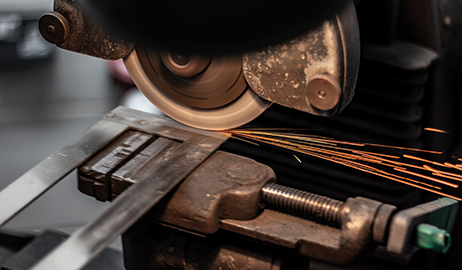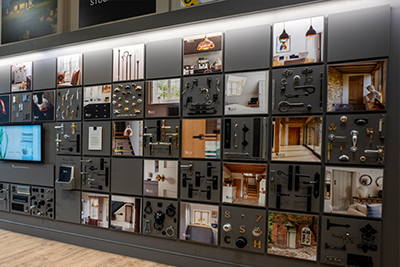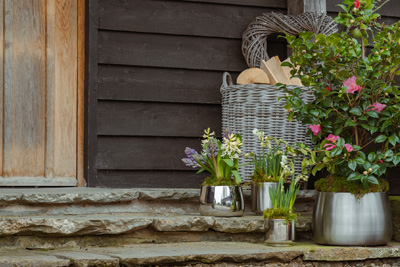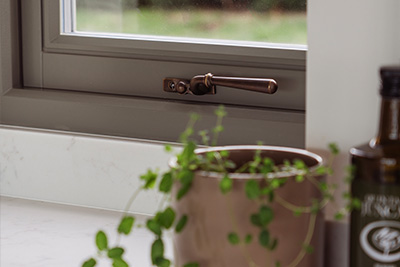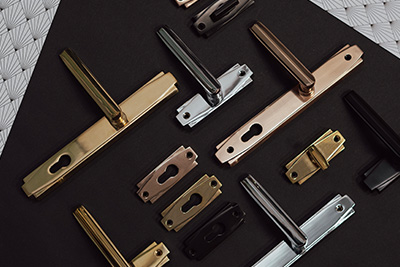- FAQ
- Locks & Latches
Locks & Latches
What's the difference between a deadlock and a sash lock?
A mortice sash lock is morticed into the door frame. It has a latch bolt, which is a spring-loaded bolt designed to keep the door in place when closed. It also has a deadbolt which locks and unlocks the door.
A mortice deadlock is also morticed into the door frame. It has a deadbolt which is opened and closed via a key. Unlike a sash lock, it does not have a latch bolt.
What’s the difference between a 2-lever, 3-lever, and 5-lever lock?
A greater number of levers makes key duplication more difficult, and therefore increases the security of the lock.
2-lever locks are the least secure and are usually found in bathroom doors – not BS3621 approved.
3-lever locks are usually used for internal doors – also not BS3621 approved.
5-lever locks are the most secure and are BS3621 approved. These are the only types of locks that are appropriate for external doors.
How do I measure a cylinder?
Measure the length from the centre of the screw hole (X) to the edge of the backplate on the external door (O). Round UP to the nearest 5mm (i.e., 38mm = 40mm). Measure the length from the centre of the screw hole (X) to the edge of the backplate on the internal door (I). Round UP to the nearest 5mm (i.e. 26mm = 30mm). Use these two values to determine which size cylinder you ned. E.g., if O = 38mm and I = 26mm, you'll need a 40/30 5pin euro cylinder.
What size euro cylinder do I need?
First, measure the thickness of your door and the thickness of your handle backplate on either side of the door. For example, if your door is 60mm thick and your backplate is 5mm on either side, the total thickness will be 60 + 5 + 5 = 70mm. This value is then split (usually in half) to give two values of 35mm and a cylinder size of 35/35. Please contact us if you’re still unsure!
Do I need a lock or a latch?
It depends on what the door's used for. For external doors, you'll need a lock to provide security. For internal doors that don't require locking, you'll only need a latch. Read our Locks and Latches guide for more information.
What type of latch do I need?
It depends which type of door handle/knob you have. Mortice latches are fitted into the edge of the door and allows the latch to hold the door in a closed position until the handle/knob is operated. Heavy-duty latches are designed for unsprung handles/knobs as they have a strong spring which helps return the lever/knob to its original position. A standard latch is used with sprung handles that already have a spring incorporated in their design.
What size latch/lock do I need?
This depends on the type of handle you have. If you have a lever handle, then a 2.5" or 3" lock would ensure the handle is a suitable distance away from the frame of the door. If you have a door knob, we suggest using a at least a 3" lock, but preferably larger (4" or 5") to ensure you'll have enough space to operate the knob without catching your knuckles on the frame.
How are locks/latches sized?
All our locks and latches are size e.g., 3" or 5". This denotes the actual size of the latch case and how much of it is morticed (fitted) into the door. Each lock/latch also has a backset measurement which is the distance from the edge of the door to the centre of the spindle, where the lever handle starts, or the middle of the door knob sits. This measurement is important - it has to be large enough to ensure you don't catch your knuckles on the frame when opening/closing the door.
What type of lock do I need?
Heavy duty or standard locks work with unsprung or sprung mechanisms respectively, but you must also consider the use of the door. Exterior doors usually use sash locks but could alternatively be fitted with multi-point locks. Stable doors need two locks and can sometimes be fitted with a deadlock on the bottom leaf. Patio doors are usually fitted with euro locks, which requires a euro cylinder and a certain type of handle. Read our Guides...
What's the difference between a standard and heavy-duty lock/latch?
The only difference is the strength of the spring inside the lock/latch. Heavy-duty products have a stronger spring which makes them better at returning the lever handle/knob to its resting position. Heavy-duty is recommended for unsprung products whereas standard is suggested for sprung items. Most of our lever handles are sprung and can be used with a standard lock/latch, but all our knob sets are unsprung and require a heavy-duty alternative. View the product page for more information.
What should I do if my lock/latch doesn't return my lever handle to its horizontal position?
Usually when this happens, it means the spring inside the lock/latch is not strong enough to return your handle to its starting position. This can be easily rectified by swapping your lock/latch for a heavy-duty version which is much stronger than our standard options. Alternatively, you can replace your handle with a 'sprung' one. Finally, you could fit a spring unit cassette behind the handle to help strengthen the existing lock/latch. You can find more about this in our ...
What's a deadlock?
A deadlock is a stand-alone, key-operated lock which is BS insurance rated. It doesn't require a handle or knob set to operate it and can be added to a door for extra security. This type of lock is often fitted to the bottom leaf of a stable door, or to a door whose existing lock is not 5-lever insurance rated.
What is a deadbolt and where do I use one?
A tubular deadbolt is used with a thumbturn. A 5mm spindle passes through the bolt to operate the lock mechanism. This is common on bathroom doors. The thumbturn on the internal side of the door is used to lock it, but in an emergency, it can be unlocked from the outside by turning a coin in the slot.
How does a bathroom lock work?
A bathroom lock has two spindle holes which allows it to operate both a lever/knob and thumbturn in the same lock. Our bathroom lever handles are supplied with a fitted thumbturn which enables locking from the inside. Our knob sets will also work with our bathroom locks, but you'll need to purchase a thumbturn separately to operate the locking part.
What's the purpose of a horizontal lock/latch?
Usually, knob sets are fitted with a horizontal lock/latch which keeps the knob an appropriate distance from the edge of the door to prevent your knuckles hitting the frame when opening/closing. Check the lock/latch measurements to see where the knob would actually sit on the door.
What are Euro locks and how do I use them?
Our euro locks are designed for use with euro cylinders which have extra security features compared to our standard locks. They can be used in many areas of the home, and you'll often see them on modern day patio doors. Please remember that any lock using a euro cylinder must also use a compatible lever handle or knob set/escutcheon combination. For more information, read our informative Guides.
What type of euro cylinder do I need?
There are three main types of euro cylinder; the first allows keyed access from both sides, the second allows keyed access from one side with a thumbturn on the opposite side, and the third only allows keyed access from one side. After deciding which type of cylinder you need, you’ll have to select the correct size.
What is a multi-point lock?
A multi-point lock is one which has multiple points of locking (normally 3 or 5 point). This is one of the most secure types of locks and should be fitted by a professional. Although they're commonly fitted on composite doors, they can also be used on solid timber or PVC doors. Multi-point locks are also known as an espagnolette system and require an espagnolette handle which mut be lifted upwards to engage the lock.
Do I need a specific handle for certain locks?
Yes. Each locking system requires a different type of handle or knob set. The information about which lock requires which handle should be stated in that product's description, but for more information please read our Guides or get in contact with us.
What type of window lock do I need?
The simple answer is to fit a stand-alone lock which is morticed into the window, with a keep fitted into the frame. An espag handle would be used to operate this. Alternatively, a multi-point locking system and espag handle can be fitted for extra security & to adhere to British Standard and insurance policies, but we recommend asking a professional to install this!
1
Categories:



